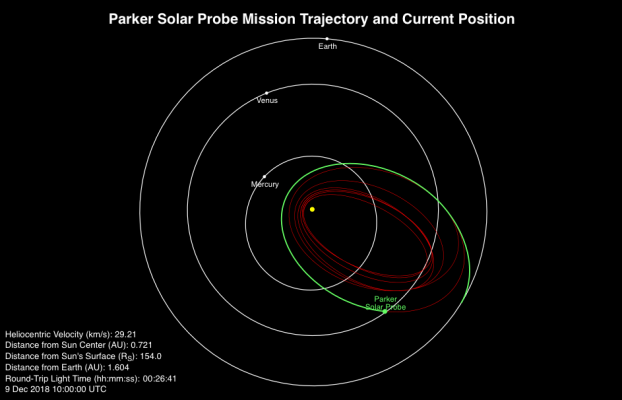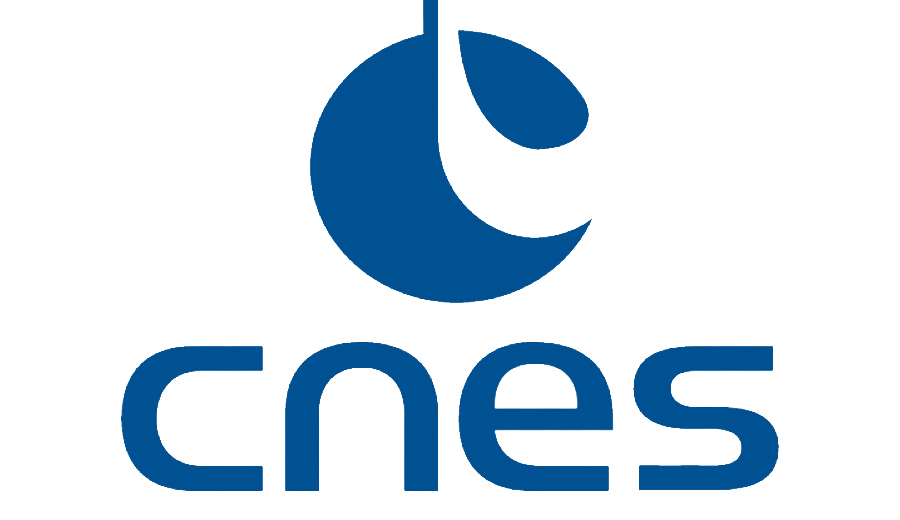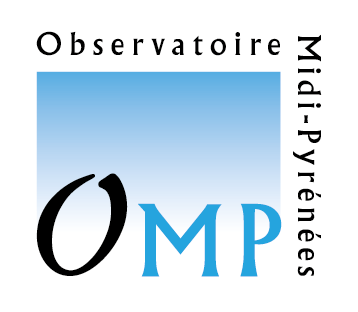First successful Sun exposure for the Parker Solar Probe mission
The Parker Solar Probe mission, launched on August 12, 2018, is the first to graze a star, our Sun. On November 6, 2018, Parker Solar Probe successfully completed its first meeting with the Sun, collecting valuable data as it passed through to answer one of the major unresolved problems of contemporary physics: why is the solar atmosphere so much warmer than its surface?

Parker Solar Probe will graze the Sun at least 25 times, with the distance from the solar surface gradually decreasing from 1/6th to 1/24th of the Sun-Earth distance, or 35 to 8.8 solar rays. Most instruments are sheltered by a heat shield, the temperature of which will exceed 1500°C when the satellite is closest to the Sun. This mission has already broken several records, including that of the satellite closest to the Sun and also the fastest human object ever made; in the end, its orbital speed will be close to 700’000 km/h.
Several French laboratories have contributed to this flagship NASA mission, thanks to the support of CNES : IRAP Toulouse (CNRS/University of Toulouse III Paul Sabatier), LESIA Meudon (Observatoire de Paris/CNRS/Sorbonne University/Université Paris-Diderot), LPP Palaiseau (CNRS/Ecole Polytechnique/Sorbonne University/Université Paris-Sud/Observatoire de Paris), PROMES Font Romeu Odeillo (CNRS/UPVD), and LPC2E Orléans (CNRS/Université Orléans/CNES). The latter provided a magnetic sensor that measures magnetic field fluctuations.
Due to severe orbital constraints, the scientific data from Parker Solar Probe can only be retrieved after several weeks, once the satellite is in Venus orbit. For this reason, the first partial data only reach us now, one month after the satellite has passed close to the Sun. It will take several more months and a second pass to have access to the full observations from the first orbit. Already, the data received confirm the good functioning of the satellite and the extreme conditions of the plasma observed in the solar corona. The detailed analysis can now begin!
IRAP Contact
- Alexis Rouillard, alexis.rouillard@irap.omp.eu






